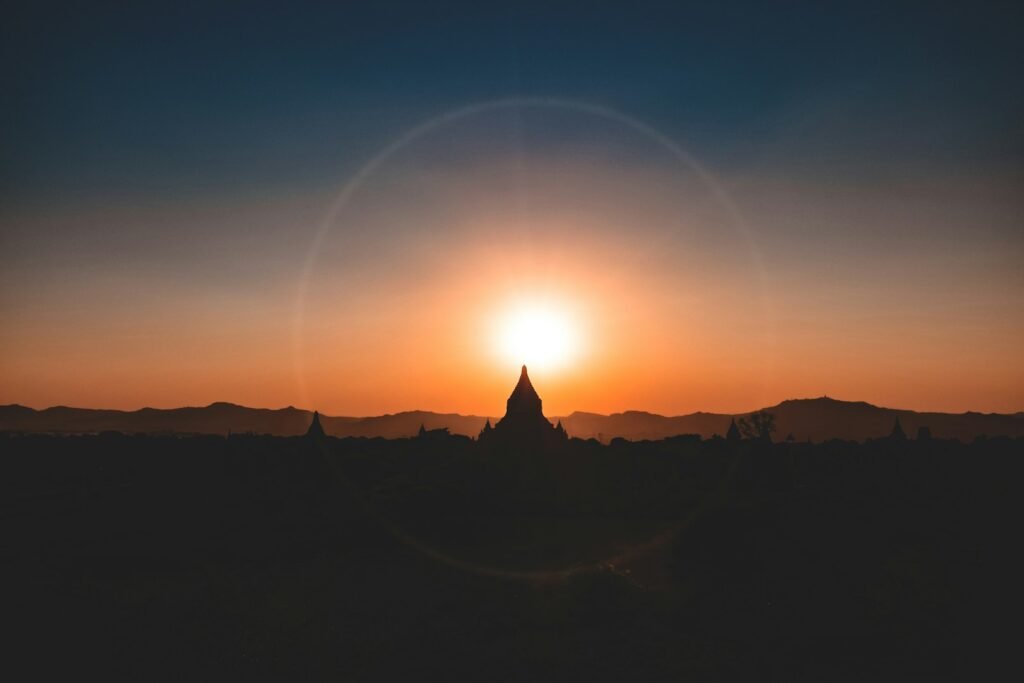A winter sky can look ordinary until, suddenly, it doesn’t: a pale ring tightens around the Sun, bright mock suns flare at its sides, and a silent beam climbs like a lantern into the dusk. These spectacles – halos, sundogs, and sun pillars – turn routine commutes into headline moments, yet the machinery behind them is hidden in the thinnest veil of ice. The mystery is simple to state and irresistible to solve: how does a cold cloud become a precision optical device? The answer is a story of geometry, gravity, and the way light threads through tiny crystals. Once you see the pattern, you’ll never look at a bright winter day the same way.
The Physics in Plain Sight
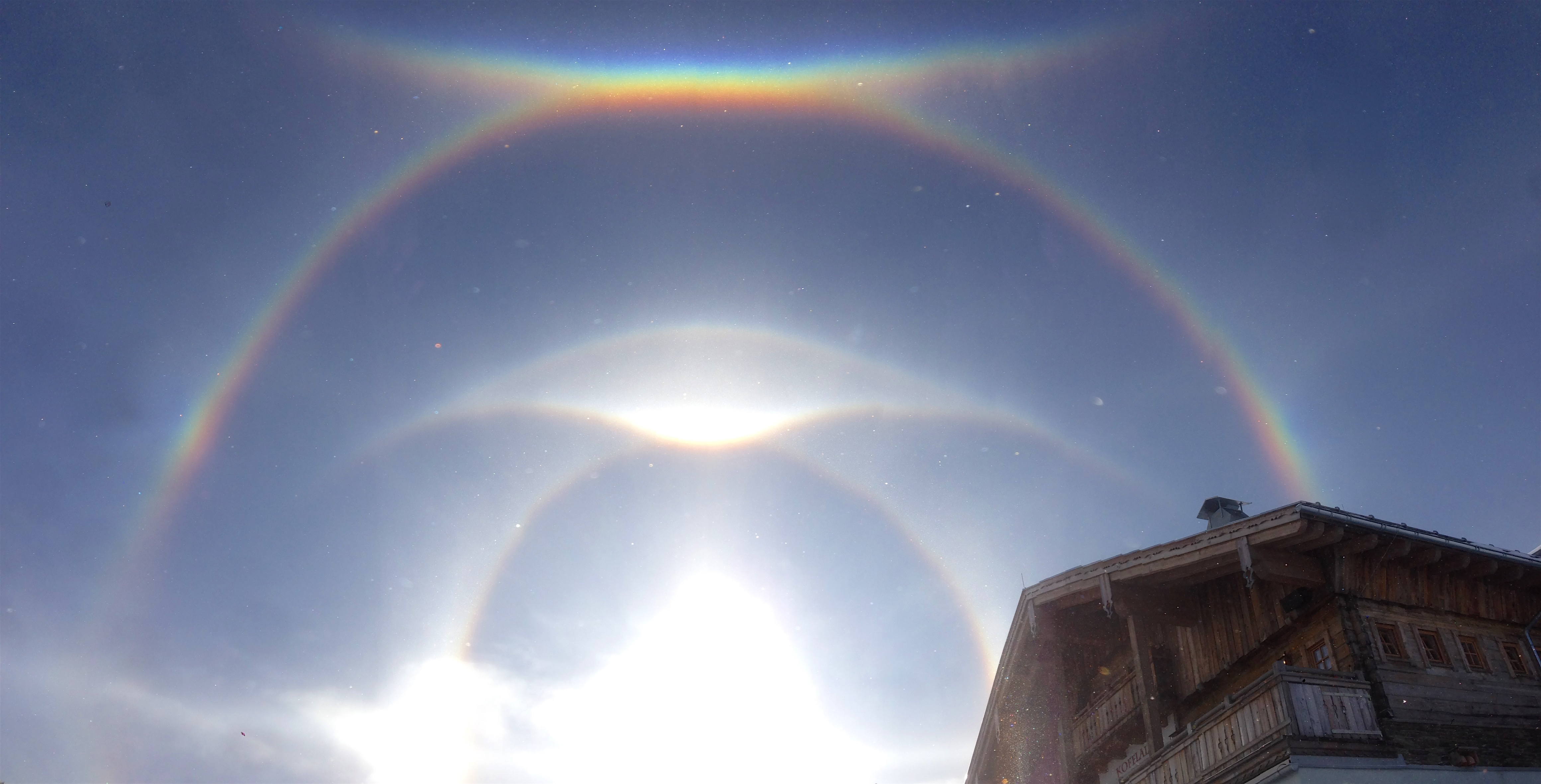
At the heart of these displays are microscopic hexagonal ice crystals drifting in high, cold air or glinting as diamond dust near the ground. Their six-sided architecture turns the atmosphere into a forest of prisms and mirrors, channeling sunlight along strict paths that our eyes read as rings, flares, and columns. When light bends through the 60-degree angles inside a crystal, it emerges offset by a characteristic amount, sketching features at fixed distances from the Sun.
The familiar 22-degree halo arises when many randomly oriented crystals send refracted rays outward to a circle roughly the width of an outstretched hand at arm’s length. Dispersion nudges red light slightly inward and blue outward, giving the ring a warm inner edge that can look surprisingly crisp on cold, clear days.
The Hidden Clues
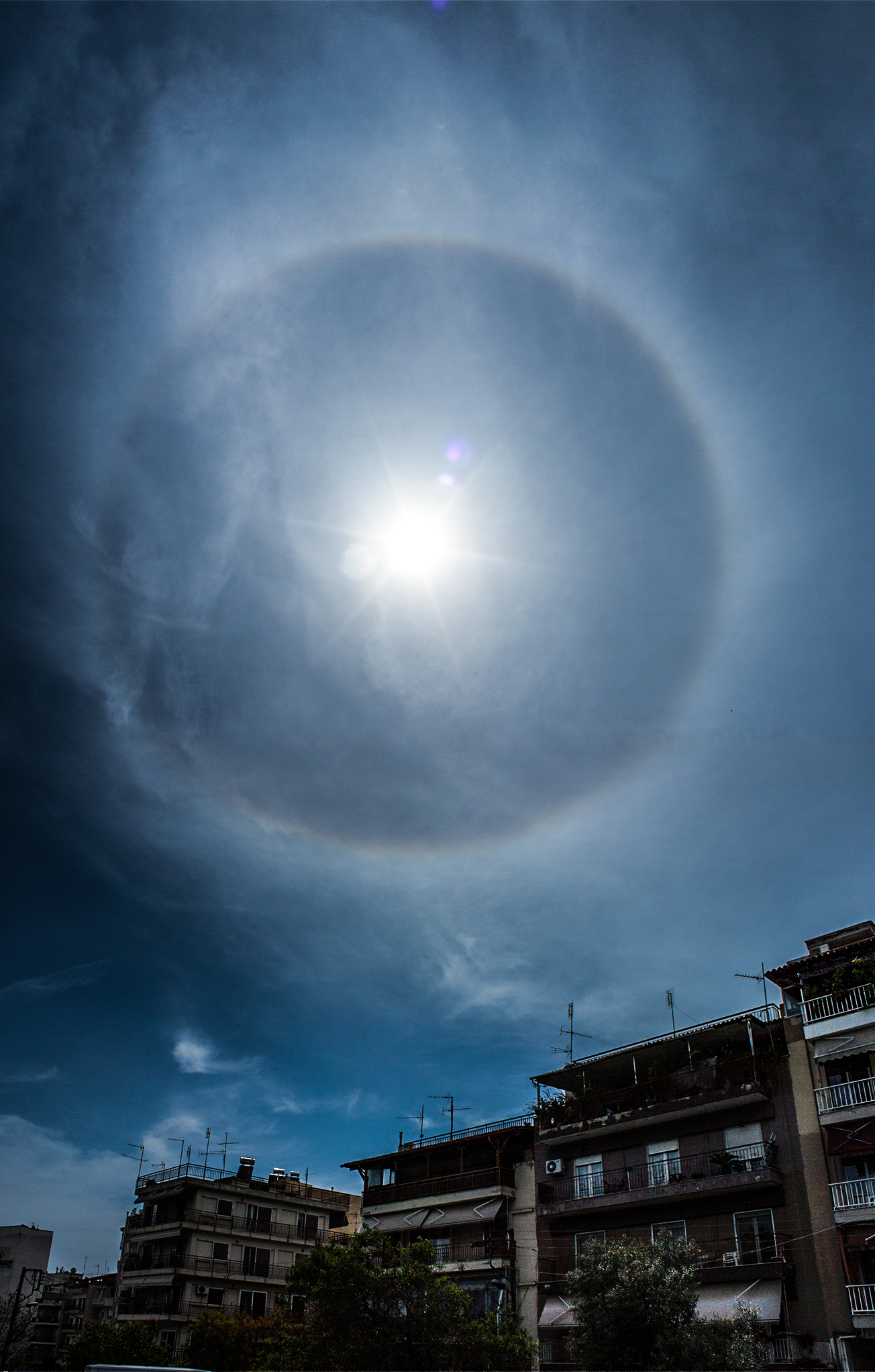
One glance can tell you more than you think: a perfect circle suggests randomly tumbling crystals, while bright spots or vertical smears hint that gravity has coaxed crystals to settle flat. The Sun’s altitude matters too, with low angles exaggerating colors and contrasts that vanish at noon. Even the sharpness of edges whispers about how uniform the crystal shapes are aloft.
Practical field trick: block the Sun with a building edge or raised hand and scan for a ring about a handspan away and for bright beacons to the left and right. If a faint, luminous bar stands above the setting Sun, you’re likely watching reflections from flat-faced plates stacking a pillar into the evening air.
Sundogs: Side Suns Born of Geometry
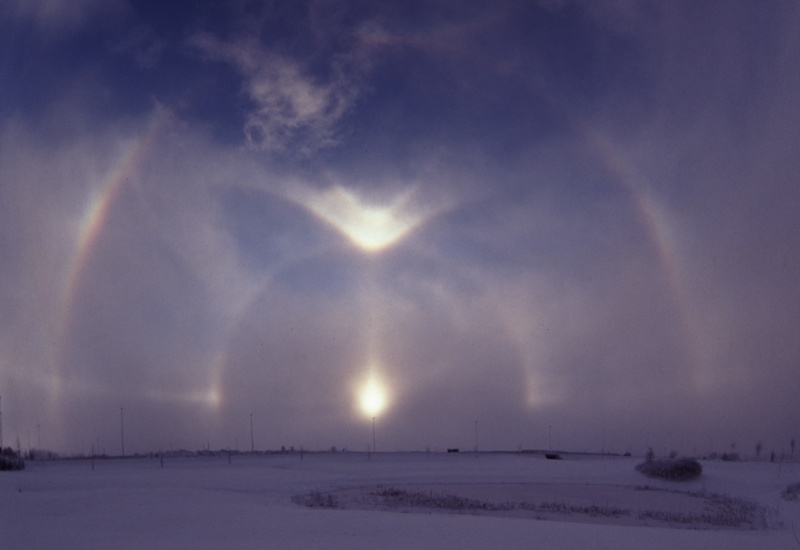
Sundogs, or parhelia, are the bright patches that hover about 22 degrees on either side of the Sun, usually at the same height above the horizon. They pop when countless plate-like crystals, gently fluttering, align their broad faces nearly horizontal so light can pass through side faces like a perfect, repeating prism. The result is a concentrated splash of color – red nearest the Sun, fading to pale blues outward – much like a rainbow squeezed into a spotlight.
They are most vivid with the Sun low, when light traverses longer paths and tiny tilts in crystal orientation become dramatically obvious. On brittle mornings I’ve watched sundogs over a frozen lake swell and fade as a breeze jostled the plates, a reminder that the dance of air at human height can choreograph the heavens above.
Sun Pillars: Mirrors in the Evening Air
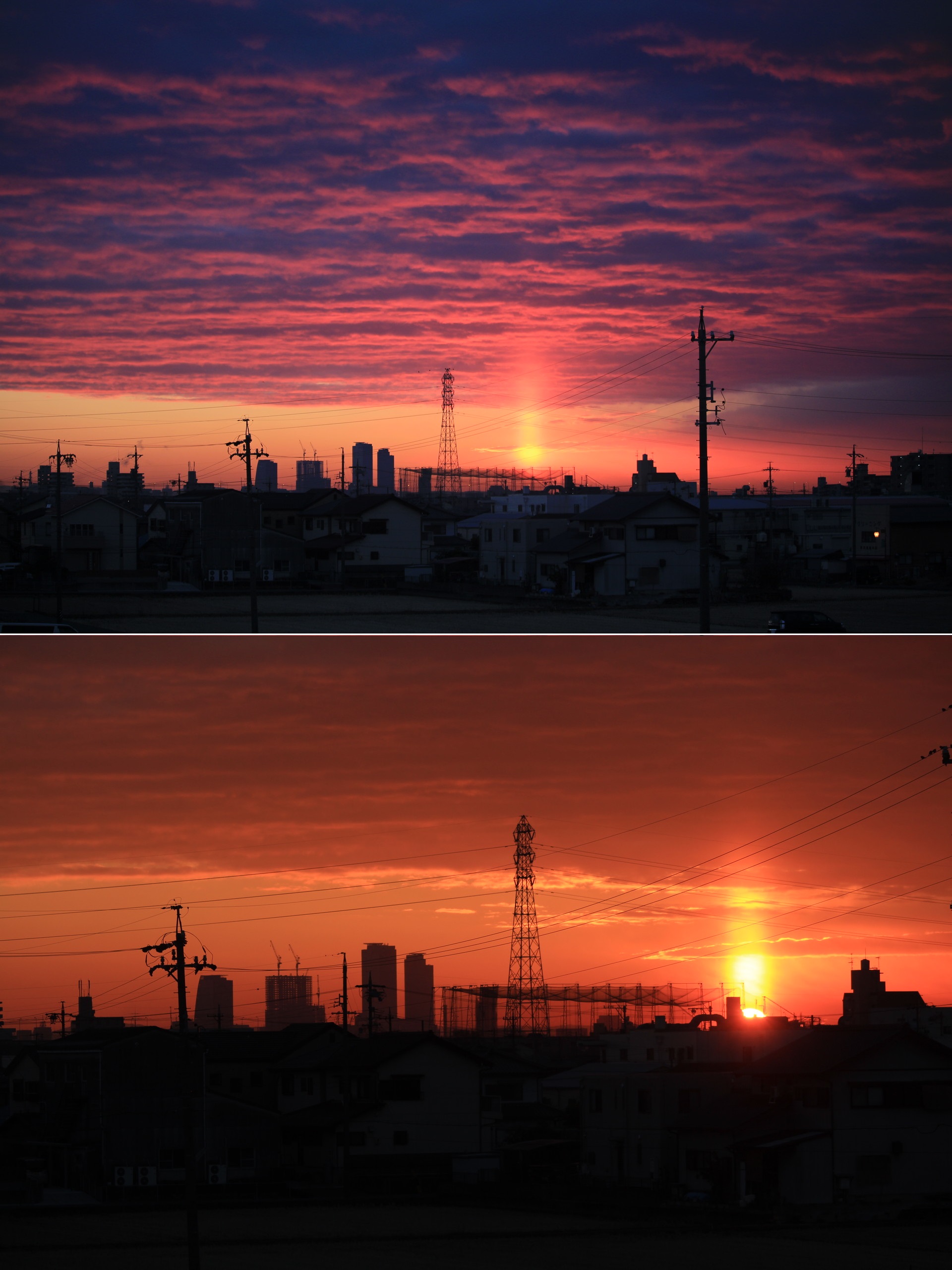
Sun pillars form when light reflects from the top and bottom faces of horizontally oriented crystals, stacking countless glints into a vertical shaft. The effect intensifies near sunrise or sunset, when a broad swath of warm sky acts like an extended lamp and even slight tilts in the crystals align into a single beam. Unlike a halo’s crisp geometry, pillars feel ephemeral, as if someone lifted a luminous curtain straight upward.
Diamond dust can produce pillars at night too, turning streetlights into glowing lances that appear to hang in the cold. It’s the same physics in a different theater: reflective faces acting like mirrors, adding rather than bending the light into line.
From Ancient Lore to Modern Science
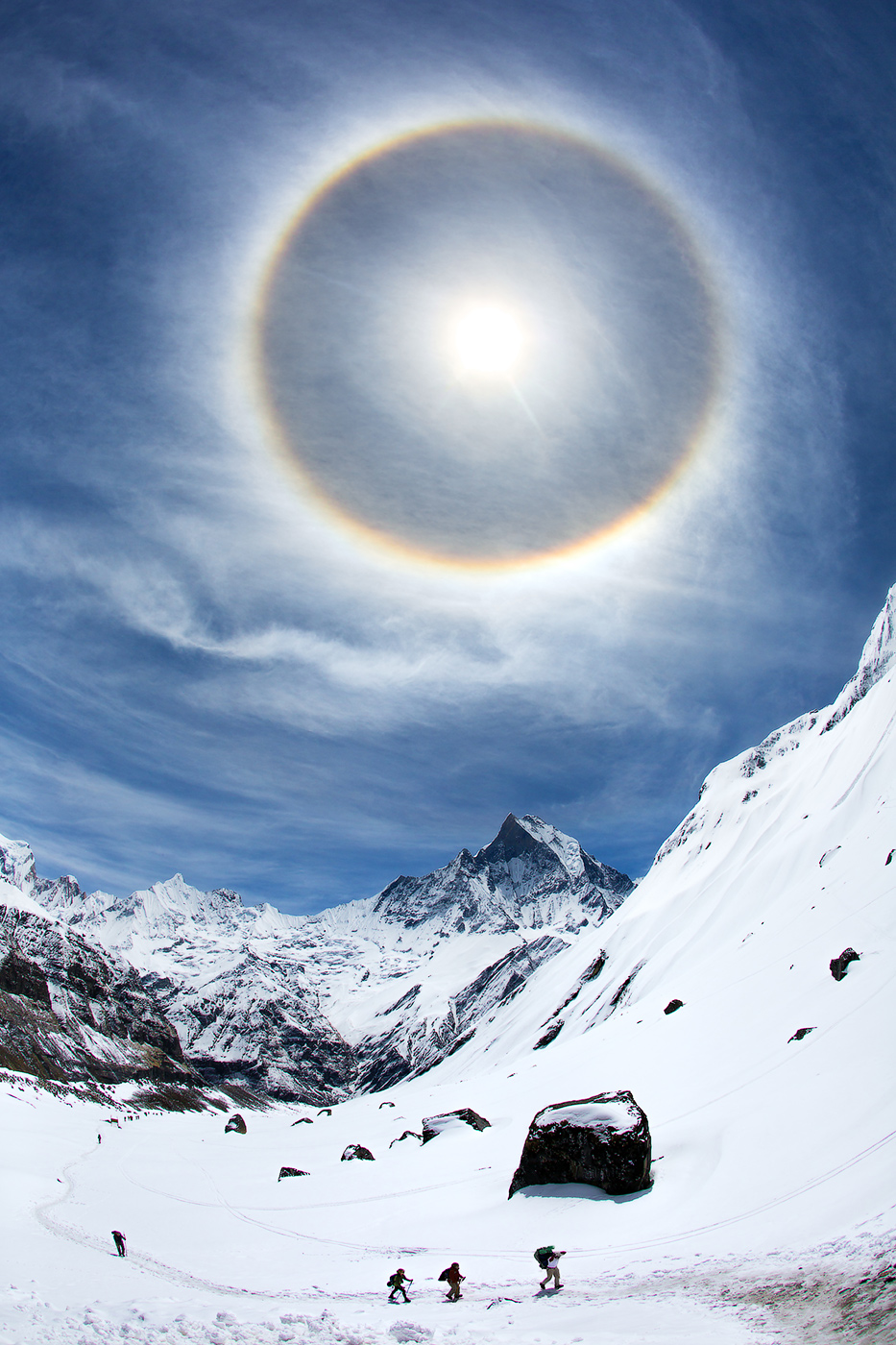
For centuries, skywatchers kept drawings and descriptions of mock suns and fiery columns, treating them as omens or weather signs long before the mathematics was clear. Today, precision optics and fluid dynamics explain how crystal shapes form in different temperatures and humidities, and why some fall like leaves while others spin. Researchers use ray-tracing models to simulate millions of light paths through realistic crystal populations, reproducing displays so closely they can diagnose crystal habits from a single photograph.
Airports quietly help, too: ceilometers and lidars sample cloud heights and backscatter, offering clues about whether crystals are present and how dense they might be. Combine that with all-sky cameras and the flood of smartphone imagery, and we’re living through a golden era of ground-truthing the icy microphysics behind these shows.
Why It Matters
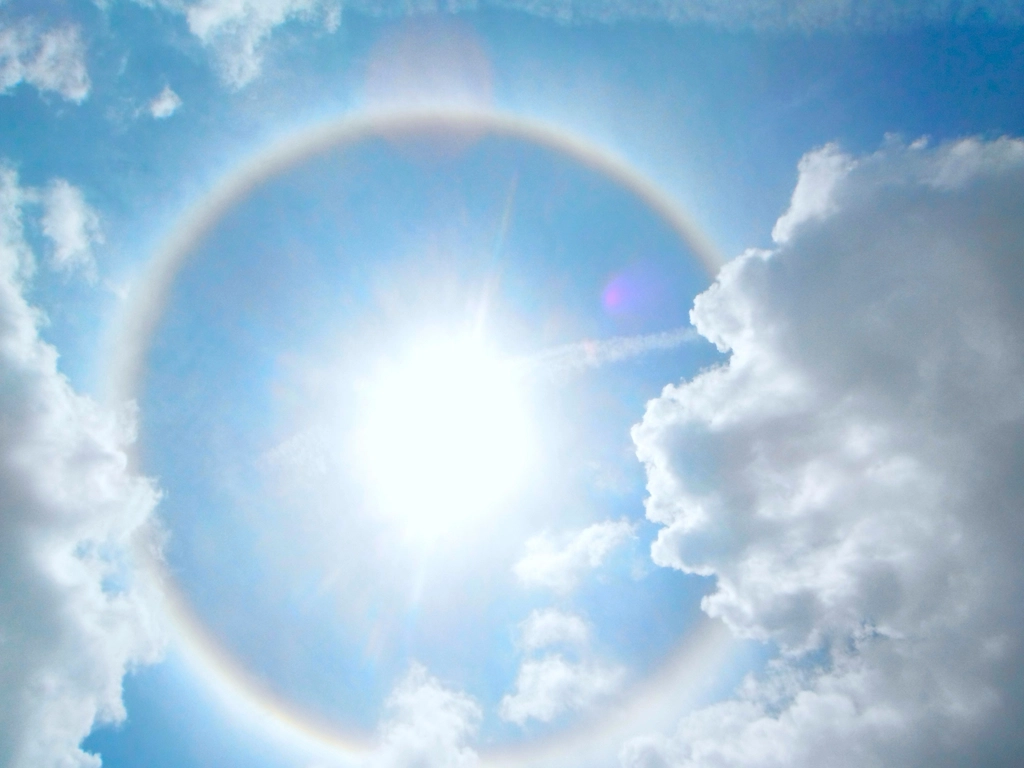
These optics aren’t just pretty; they’re signals about ice in the atmosphere, a key driver of Earth’s energy balance. Cirrostratus clouds that cast halos can precede changes in weather, and experienced forecasters treat a bright 22-degree ring as a nudge to watch the next 12 to 36 hours. Crystal orientation matters for climate models because aligned plates reflect and transmit sunlight differently than random tumblers, subtly shifting how much energy the planet keeps or loses.
Sundogs and pillars also have practical value at human scales: their presence can hint at diamond dust that reduces visibility, and at ice-phase clouds that affect solar-power output. Compared with relying solely on satellite snapshots, ground sightings add texture – local, real-time context that satellites can miss between overpasses and angles.
The Future Landscape
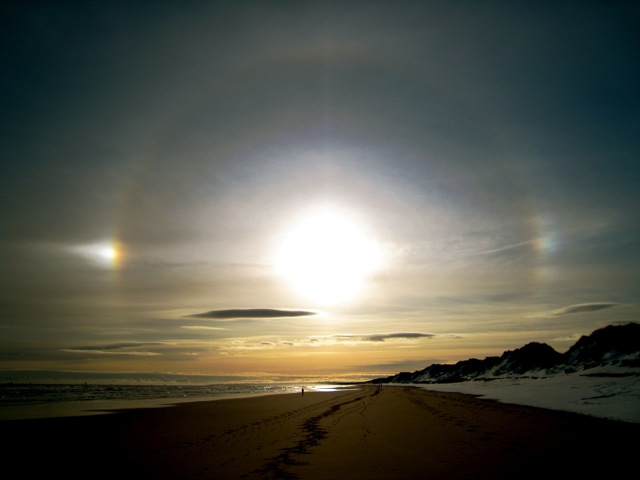
The next leap blends skywatchers, automation, and new instruments. Machine-learning tools are already sorting huge archives of horizon cameras to flag halos, sundogs, and pillars, linking each display to weather soundings that reveal temperature and humidity layers. Meanwhile, improved polarimetric sensors on satellites and lidars on the ground are sharpening our view of crystal shape and alignment, exactly the ingredients that determine which display appears.
Challenges remain: algorithms must untangle look-alikes like thin contrails or lens flares, and observations need standardized quality so models can trust what people send. But the arc is clear – more precise microphysics, tighter feedback into forecasts, and a fuller accounting of how ice crystals paint the sky and nudge the climate.
Conclusion
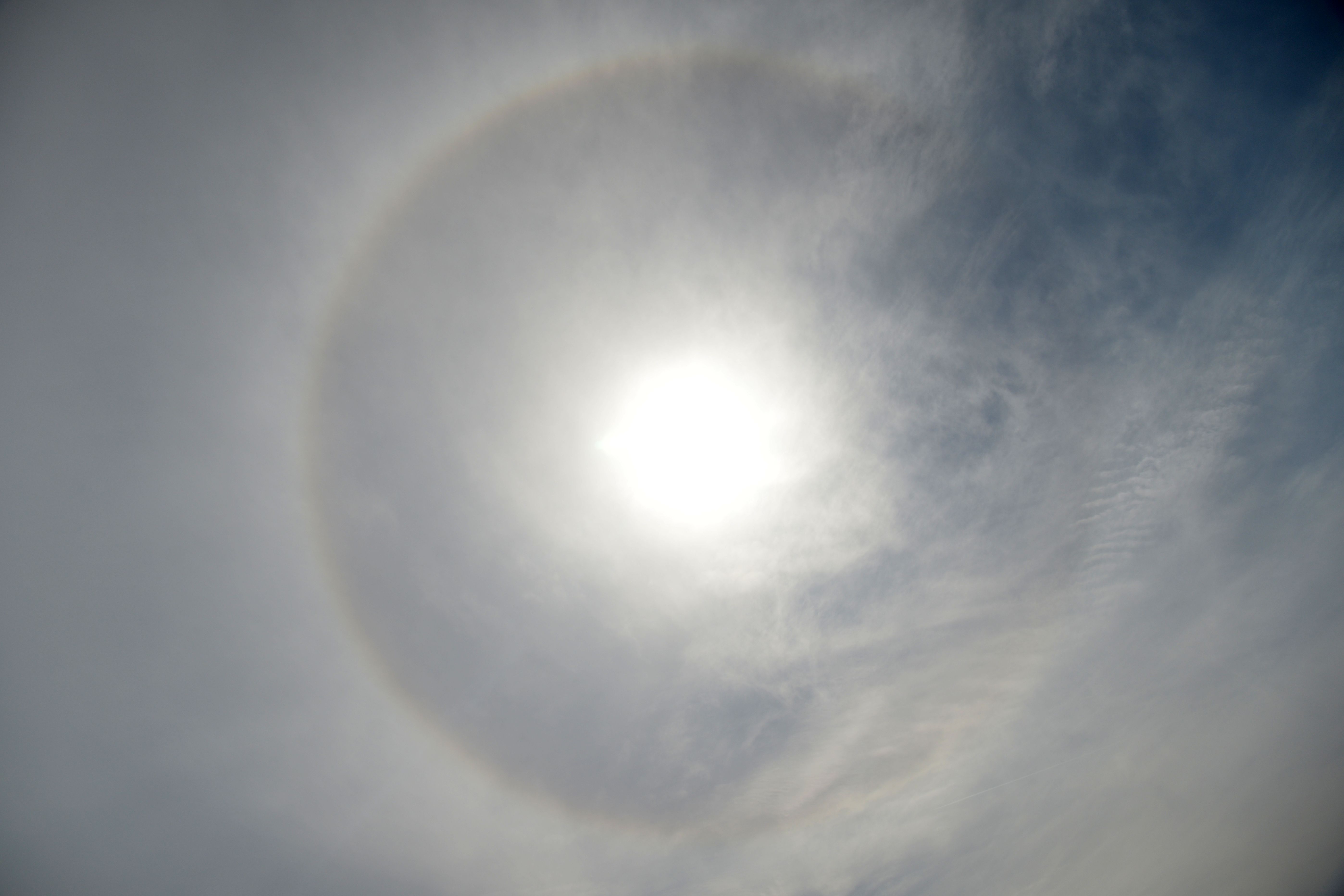
Start simple: carry curiosity and a habit of looking up, especially on frigid mornings or when a thin, milky cloud slides in ahead of a storm. Shield the Sun with a building edge, check about a handspan away for a halo, then scan left and right for the sundogs; at sunrise and sunset, look for a narrow glow climbing straight up. Photograph what you see, note the time and your location, and share with local weather offices or community-science platforms that collect sky observations.
Do it safely – never stare directly at the Sun – and keep a mental log of what followed in the next day or two so you build your own weather intuition. The next time the sky stages a ring, a pair of side suns, or a pillar, you’ll read it like a headline you can trust – what will you spot first?

Suhail Ahmed is a passionate digital professional and nature enthusiast with over 8 years of experience in content strategy, SEO, web development, and digital operations. Alongside his freelance journey, Suhail actively contributes to nature and wildlife platforms like Discover Wildlife, where he channels his curiosity for the planet into engaging, educational storytelling.
With a strong background in managing digital ecosystems — from ecommerce stores and WordPress websites to social media and automation — Suhail merges technical precision with creative insight. His content reflects a rare balance: SEO-friendly yet deeply human, data-informed yet emotionally resonant.
Driven by a love for discovery and storytelling, Suhail believes in using digital platforms to amplify causes that matter — especially those protecting Earth’s biodiversity and inspiring sustainable living. Whether he’s managing online projects or crafting wildlife content, his goal remains the same: to inform, inspire, and leave a positive digital footprint.

